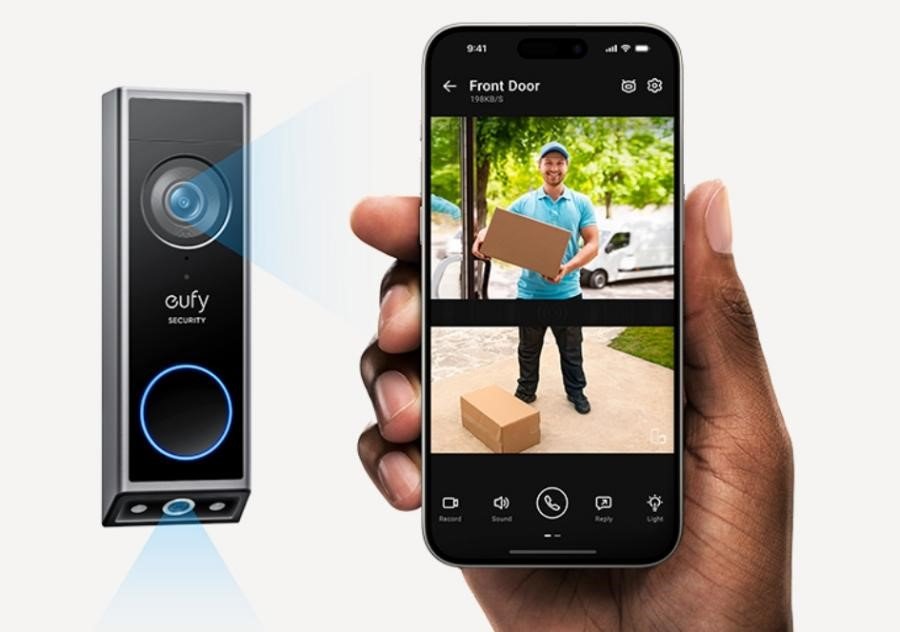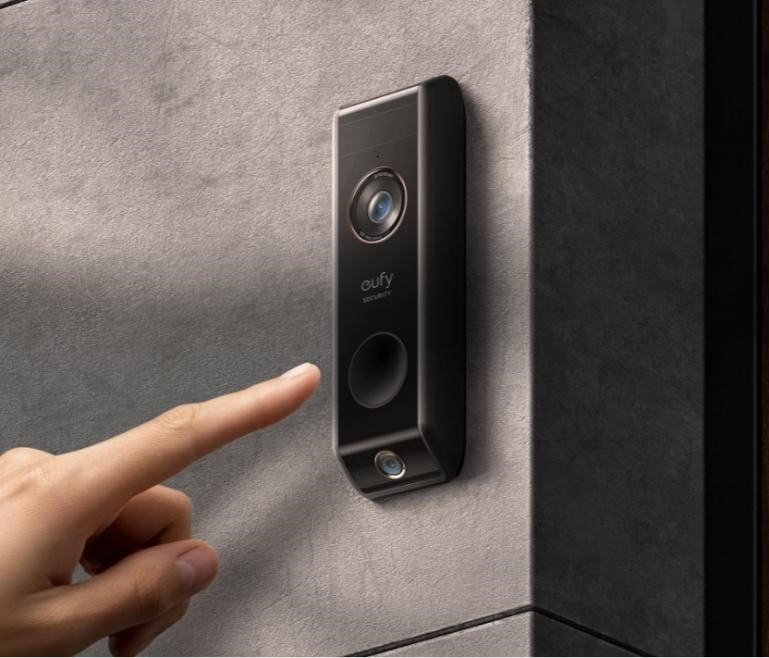
How Do Doorbell Cameras Without WiFi Work?
Doorbell cameras have revolutionized home security by offering real-time monitoring and protection. However, not all homes have reliable WiFi connectivity, especially in remote or off-grid areas. Fortunately, doorbell cameras that don’t require WiFi are designed to offer the same level of security, using alternative technologies to keep your home safe. These cameras operate through cellular networks and local storage, eliminating the need for internet access. This is a great solution for homeowners looking for simple, effective security measures without being tied to a WiFi network. In this article, we’ll explore how doorbell cameras work without WiFi, their key features, and why they might be the ideal option for your security needs. By understanding how these systems operate, you can make an informed decision about whether a non-WiFi doorbell camera is the right fit for your home.
How Do Doorbell Cameras Operate Without WiFi?
Cellular Connectivity in Non-WiFi Doorbell Cameras
Non-WiFi doorbell cameras rely heavily on cellular networks to function. Instead of connecting to a local WiFi router, these cameras use a built-in SIM card that accesses 3G, 4G, or even 5G networks to transmit video and data. This means that as long as the camera has a cellular signal, it can send alerts, stream video, and provide real-time monitoring directly to your smartphone. The reliance on cellular technology allows these cameras to be installed in places where WiFi is unavailable or unstable, making them a suitable choice for rural homes, cabins, or other remote locations. Moreover, cellular connectivity offers a secure and reliable method for data transmission, reducing the risk of interruptions that can occur with overloaded WiFi networks.
Local Storage Options for Video Recording
One of the challenges of non-WiFi doorbell cameras is how to store video footage without cloud access. Many of these cameras come equipped with local storage options, such as SD cards or built-in hard drives, that allow users to save recorded videos directly onto the device. This method ensures that all footage is securely stored without the need for internet access. Some advanced models even offer the option of manually retrieving data by connecting the device to a computer via USB or Bluetooth. This can be advantageous for those who prioritize data privacy, as footage is kept offline and less vulnerable to hacking. Additionally, these cameras may offer scheduled or event-based recording to ensure efficient use of storage space.
How Do These Cameras Send Alerts and Notifications?
Even without WiFi, non-WiFi doorbell cameras can send alerts and notifications to your mobile device. When motion is detected or someone presses the doorbell, the camera uses cellular data to send a notification or message directly to your smartphone. You can receive alerts anywhere that has cellular reception, allowing you to stay informed about activities at your home no matter where you are. Some systems also allow real-time communication via two-way audio, letting you interact with visitors or potential intruders. The use of cellular alerts offers flexibility and convenience, especially for homeowners who travel frequently or manage rental properties. It ensures that security updates reach you promptly, without depending on a WiFi connection.

What Are the Key Features of Non-WiFi Doorbell Cameras?
Battery-Powered Design and Power Management
One of the standout features of non-WiFi doorbell cameras is their reliance on battery power, making them easy to install and maintain. These cameras typically use rechargeable lithium-ion batteries, which can last several weeks or even months on a single charge, depending on usage and settings. Power efficiency is crucial, and many models incorporate energy-saving modes, such as motion-activated recording, to preserve battery life. Some models also come with solar panels as an accessory, allowing for continuous charging and making them ideal for off-grid locations. Battery-powered designs eliminate the need for complex wiring, enabling quick installation and reducing installation costs.
Motion Detection and Recording Without WiFi
Non-WiFi doorbell cameras are equipped with advanced motion detection sensors that activate video recording and send alerts when movement is detected. These sensors can be customized to reduce false alarms, such as those triggered by animals or passing vehicles. Motion detection ensures that the camera only records when activity is present, saving storage space and preserving battery life. Some cameras also feature adjustable sensitivity levels and the ability to set specific motion detection zones. This allows users to focus on critical areas like doorways or driveways, increasing the efficiency and reliability of the camera’s security coverage.
Integration with Smart Home Devices
While non-WiFi doorbell cameras do not rely on the internet for operation, some models are compatible with smart home devices through local protocols such as Z-Wave or Zigbee. This enables the camera to integrate with existing home security systems, such as smart locks, alarms, or lighting systems, providing a comprehensive approach to home automation. By integrating with other smart devices, homeowners can create customized security routines. For example, the camera can trigger outdoor lights to turn on when motion is detected or activate alarms if suspicious activity occurs. This added functionality enhances the overall security experience, even without the need for WiFi.
Why Choose a Doorbell Camera Without WiFi?
Benefits for Remote and Off-Grid Locations
For homeowners in remote or off-grid locations, doorbell cameras without WiFi offer a practical solution. These areas often have poor or non-existent internet coverage, making traditional WiFi-connected cameras unreliable. With a non-WiFi camera that uses cellular networks, security is still within reach. These cameras are designed to function independently of the internet, providing video surveillance and real-time alerts regardless of location. This is especially useful for vacation homes, cabins, or properties that may not have full-time residents but still require monitoring for security purposes.
Improved Privacy and Data Security
Non-WiFi doorbell cameras also appeal to users who prioritize privacy and data security. Because these cameras do not rely on cloud storage or internet-based services, the risk of data breaches is significantly reduced. All video footage is stored locally, and the data transmission is typically encrypted, adding an additional layer of security. For individuals concerned about their video data being accessed by hackers or unauthorized third parties, non-WiFi cameras offer peace of mind by keeping everything offline and under their control.
Simplicity in Installation and Maintenance
Installing a doorbell camera without WiFi is straightforward and requires minimal tools or technical expertise. These cameras are often battery-powered, which eliminates the need for wiring or extensive setup processes. Simply mount the camera, insert the battery or connect it to a power source, and it’s ready to use. Additionally, non-WiFi cameras typically require less maintenance than their WiFi counterparts, as they don’t rely on internet connection troubleshooting. With fewer components to manage, these systems are user-friendly and can be installed and operated without technical knowledge, making them an attractive option for those seeking hassle-free security.
Can Non-WiFi Doorbell Cameras Provide Reliable Security?
Real-Time Monitoring Using Cellular Networks
Non-WiFi doorbell cameras leverage cellular networks to provide real-time monitoring, ensuring you can keep an eye on your property at all times. Even in the absence of a WiFi connection, these cameras can stream live footage directly to your smartphone using mobile data. This real-time access is invaluable for users who want to monitor their homes while away or receive instant updates if suspicious activity occurs. Cellular networks tend to be more widely available than WiFi in certain regions, making this an effective solution for reliable, continuous monitoring.
Limitations Compared to WiFi-Connected Cameras
While doorbell cameras without WiFi offer significant advantages, they do have some limitations. Cellular data can be more expensive than WiFi, and users may need to subscribe to a data plan to access certain features. Additionally, the video quality of cellular-connected cameras may not be as high as WiFi models, especially when the network signal is weak. These limitations may affect the camera’s overall performance, especially in areas with poor cellular coverage. However, for most users, the trade-off between convenience and slight reductions in quality or cost is worth it.
Practical Applications for Home and Business Use
Non-WiFi doorbell cameras are versatile and can be used in various residential and commercial settings. Homeowners benefit from added security without needing to worry about internet interruptions, while business owners in remote locations can ensure their property is monitored. These cameras are especially practical for rental properties, construction sites, and temporary locations where internet access is unavailable. Their flexibility and ease of installation make them a reliable choice for both personal and professional security needs.
Conclusion
Non-WiFi doorbell cameras offer an effective and flexible solution for homeowners and businesses that need security without relying on WiFi. By using cellular networks and local storage, these cameras provide robust monitoring capabilities while maintaining privacy and data security. Whether you live in a remote location, want to avoid internet dependencies, or prefer a simple setup, non-WiFi doorbell cameras can meet your security needs. With easy installation, reliable performance, and advanced features, they offer a strong alternative to traditional WiFi-based security systems.




